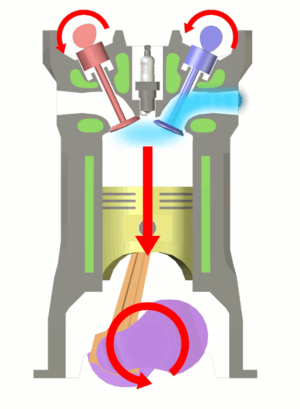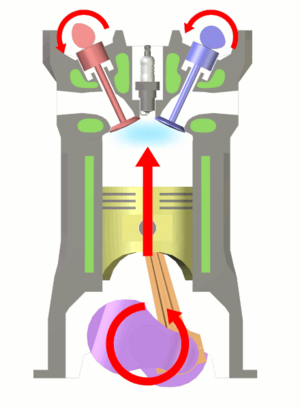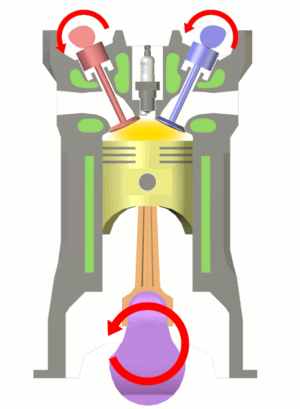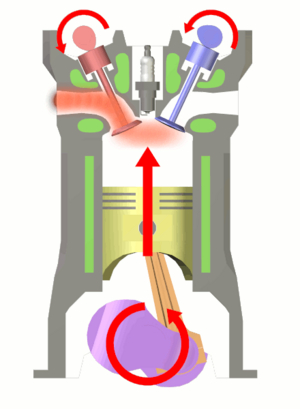Four-stroke engine facts for kids
A four-stroke engine is a special kind of internal combustion engine. This means it creates power by burning fuel inside itself. You can find these engines in many cars, motorcycles, and even some lawnmowers! They work by completing four main steps, or "strokes," to turn fuel into movement. Each stroke is a movement of a part called a piston inside a cylinder.
Contents
How a Four-Stroke Engine Works
A four-stroke engine needs four main steps to create power. Think of it like a cycle that repeats over and over again to keep the engine running. These steps are intake, compression, combustion (or power), and exhaust.
The Four Steps of Power
1. Intake Stroke: Breathing In
The first step is when the engine "breathes in." A valve called the intake valve opens up. As the piston moves down, it pulls a mixture of air and fuel into the engine's cylinder. It's like taking a big gulp of air! The exhaust valve stays closed during this step.
2. Compression Stroke: Squeeze Time
Next, both the intake and exhaust valves close tightly. The piston then moves back up, squeezing the air and fuel mixture into a very small space. This makes the mixture hotter and ready to burn with a lot of force.
3. Combustion Stroke: The Big Bang
This is where the power happens! Just as the piston reaches the top of its squeeze, a spark plug creates a spark. This spark ignites the highly compressed air and fuel mixture, causing a small explosion. The expanding gases from this explosion push the piston down with great force. This powerful push is what makes the engine's crankshaft spin, creating the energy to move a vehicle.
4. Exhaust Stroke: Blowing Out
Finally, the exhaust valve opens. As the piston moves back up again, it pushes out all the burned gases from the explosion. These waste gases go out through the exhaust pipe. Once the piston reaches the top, the exhaust valve closes, and the engine is ready to start the whole four-stroke cycle again!
Why Four Strokes?
The four-stroke engine design is very common because it is efficient and powerful. It uses fuel well and produces less pollution compared to some other engine types. Many modern cars use four-stroke engines, often combined with other technologies like hybrid systems.
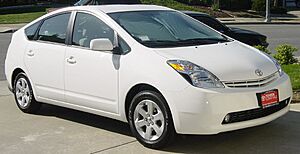
Related pages
Images for kids
See also
 In Spanish: Ciclo de cuatro tiempos para niños
In Spanish: Ciclo de cuatro tiempos para niños


